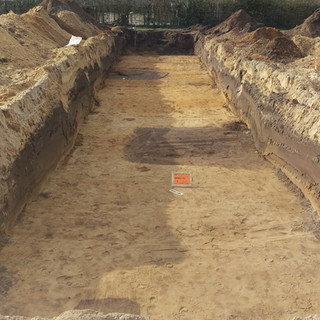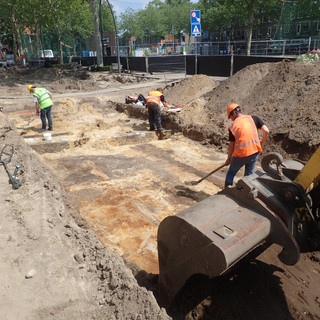Rescue/ Commercial Archaeology
- Raven Todd DaSilva
- Dec 13, 2019
- 4 min read
Quick disclaimer* the information I’m giving you in this video is a general overview, and specifics are based on protocols and standard practices in The Netherlands, so some things will differ from country to country. So please do your research to find your own local specifics.
Commercial archaeology pertains to the strain of archaeology that investigates local sites before any private or public building takes place on top of them.
It all sounds very straightforward and practical, and in fact, it kind of is! Because there’s so much modern development going on in the world today, commercial archaeology is vital to make sure we don’t destroy any important archaeological finds while we build. For this to happen of course, and to hold big corporations accountable, there has to be some sort of set rules and regulations that both development companies and archaeologists have to abide by.
Which brings me to this fancy piece of paper here. This is the Valletta Treaty, formerly known as the European Convention on the Protection of the Archaeological Heritage (Revised), and also known as the Malta Convention. It’s a treaty that aims to protect European archaeological heritage as quote: "a source of European collective memory and as an instrument for historical and scientific study". It was signed on January 16, 1992.
In a nutshell, some of the articles within this treaty state that whoever intends to “disturb the soil” as Arjan put it, has to pay for archaeological investigation first. It’s the same process if you’re getting an environmental survey of the site done, which is also a mandatory thing when building on an undisturbed area. And this is where commercial archaeologists come in! They’ll analyze the site that people want to build upon, and then if there’s anything important to the archaeological record, they’ll investigate further and gather as much information as possible before building commences.
So here’s how it’s done:
First thing’s first! Research. Sitting at a desk, analyzing the area to see if something could potentially be there. After that, survey time! This can either be on top of the land, or a drilling survey [a2] can be done if archaeological features or soil marks are thought to be preserved. And then step 3- if they find anything, advising to lay down some test trenches in a grid. These commonly measure 4x25m each. These trenches aim to expose 10% of the land that they want up build on. If there are any substantial finds, the authorities are then notified, and the archaeologists advise that there should be a proper excavation. With this information, the municipality’s independent archaeologist judges the finds of the surrounding areas to compare if, and based on this, they either get the go-ahead for digging, or not.
You can think of commercial archaeology as “rescue archaeology” because they won’t dig anywhere unless there is development planned for it. They also only dig where the soil is going to be disturbed by the planned building activities, even if the archaeological features continue outside the perimeter. That, and you probably won’t excavate as deep as you would in a normal archaeology setting, as you just go as far as the new structure is going to go. It’s quite a challenging job, as you’re constantly juggling the interests of the client (who wants it done fast and cheap), the authorities, society, as well as the academic world.
Now, after the excavation comes the paperwork. Everything is evaluated, the specialists get to analyse the materials, and everything is compiled into a report. All the finds are then stored in a depot belonging to the municipality or province where the excavations took place. This is because the finds are owned by the state of course, and not the landowners. This is how we protect cultural heritage and make sure it stays where it was found.
And that is essentially commercial archaeology! I really enjoyed interviewing Arjan about this because, as I’m sure with a lot of other archaeologists and archaeological students, there seems to be a stigma attached to the commercial archaeology field. There’s this belief that it’s not methodical, that everything’s rushed, corners are cut, and you’re sort of just grabbing things haphazardly out of the ground. But it’s actually the complete opposite! They excavate down to a point where they can see the archaeological features best, then section them all. They take photos, make drawings; they measure everything digitally, number, and document everything! They also make sure that each feature is excavated completely to make sure there is nothing left- which is super important because with commercial archaeology, you can’t go back and do further excavation because there’s going to be a brand new structure on top of it! They follow strict rules to make sure that everything is done correctly, and the report only has to be submitted within two years, so they make sure everything is properly interpreted and documented.
Commercial archaeology is a super important field, and I think we should all give the archaeologists working in cultural resource management a little more slack. Because without them, a lot of important information would be lost to progress and development. It’s also a great way to get the public involved and interested about archaeology. Because these excavations take place in areas close to urban centers, it can really spark the interest of the people living around the development because it’s their local history, they personal cultural heritage. It’s the perfect platform for education and public outreach. Volunteers are even often invited to join and help out with excavations!
So for all you of studying archaeology, always remember to look at the bigger picture. Archaeology doesn’t just happen in famously historic areas; it’s all around you, right under your nose. And it’s a lot cooler than you think.
.png)






















Comments